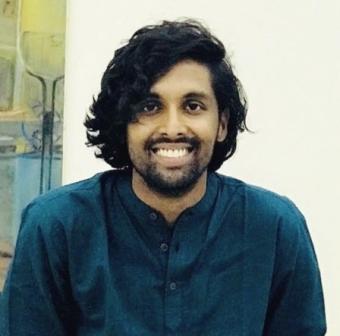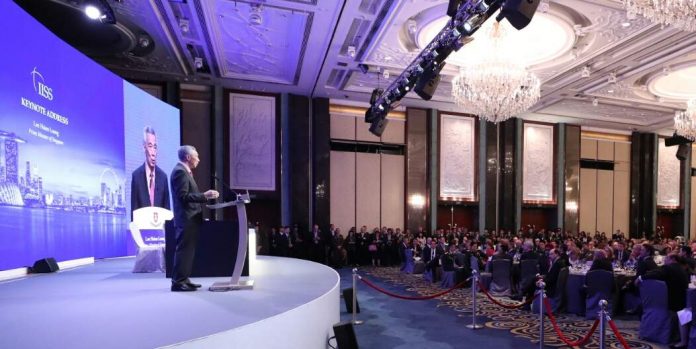A major takeaway from the recently concluded Shangri La dialogues, Asia’s premier defence summit, was that middle powers in the Indo-Pacific region have seemingly more active role to play. However, it remains to be seen to what extent the middle powers in the region are actually ready to take on the greater roles. For countries in the region, seeking a greater role would essentially entail the question of dealing with China, and wading through the rough water generated by ongoing US-China rivalry in the region.
The verbal tussle between the US and China at the Shangri La was an indication that the rivalry is not going to die down any time soon, rather it has all the potential to exacerbate or even possibly culminate in a conflict.
Arguably, amid this ongoing great power rivalry and emerging space for middle powers to play active roles, India’s stance or how its strategy going to unfold assumes greater significance. While, certainly, normalcy in the region is of India’s greater interests just like other countries in the region, it is very important to see how India is going to articulate its vision through actions. Analysing certain recent trends coupled with India’s non-participation at the Shangri La provide pointers to India’s stance. They seem to suggest that India’s strategy would likely to be following the status quo.
Soft Balancing in India’s Indo-Pacific Strategy
Peace and security in the region are high up on India’s list of priorities. As first and foremost, India’s economic interests in the region requires peace and convivial environment. At the same time, India has acknowledged rising China’s threats to its vital national interests in the region. Therefore, India’s strategy must be seen against the background of the interplay between India’s economic interests and national security.
The setting up of the Indo-Pacific wing in the Ministry of External Affairs (MEA) in April 2019 has clearly conveyed the intent that Indo-Pacific remains embedded in India’s foreign policy. India’s active participation in the Indian Ocean Rim Association (IORA), the East Asia Summit, the BIMSTEC, the Mekong-Ganga Economic Corridor, and the ASEAN are further affirmations of the same.
However, the fact is, India doesn’t want to make China angry, as hostility with China can have rather serious repercussions for India. India’s absence at the Shangri La, even as its presence was sought as a credible balancing power between the US and China, reasonably explains this China factor. In fact, India doesn’t want to get caught in the US-China rivalry. And New Delhi has been straining every nerve to avoid being sucked into the deepening rivalry.
Even in the last year’s Shangri La summit, Indian Prime Minister Narendra Modi took extra caution as he carefully avoided mentioning the “quadrilateral strategic dialogue” – a US-led grouping of four regional powers including Australia, Japan and India, also known as “the Quad” and refrained from criticising China. Much has not changed since then.
Inviting Chinese fury can potentially weaken peace in the region which is already in flux. It can potentially engender a tensed situation in which India has to deal with two bordering neighbours (China and Pakistan) in the security realm. Moreover, such hostile equation will certainly have its ramifications for organizations like the Shanghai Cooperation Organization (SCO) in which both the countries are part of, becoming inimical to India’s regional interests further.
As a matter of fact, being aware of such a scenario, India has been following a soft balancing approach. Recently, India stepped up its soft balancing strategy as India and Japan elevated their relations to strategic partnership and both countries evinced proactive interests in jointly building Colombo Port, which analysts have looked upon as India and Japans’ strategic counter to China’s Belt Road Initiative.
The rather same approach was apparent in India’s behaviour vis-à-vis Washington. India has time and again showed reluctance to form a fully-fledged alliance in the deeply polarized Indo-Pacific. This is despite India’s balancing act failed to contain the hegemonic rise of China in the region. India fears a closer alignment with the US may possibly make India’s China relations frosty and further bolster the growing Russia and China relations.
In the same vein, for similar reasons, India rejected Australia’s request to join the Malabar exercise which India and the US have been jointly conducting since 1992. Moreover, India is less than serious about tying the Malabar exercise to its Indo-Pacific strategy and views the Malabar exercise separately from the Quad.
Ultimately, one has to understand that India’s Indo-Pacific strategy is mainly guided by its immediate domestic interest. Contrastingly, China’s strategy is typically characterised by the behaviour of a rising superpower, as it is striving to play a greater role in the international system, seeking parity with the US.
China has gone far ahead in establishing a faster domestic economy and lifted millions from poverty within a short span of time. For India, those challenges still remain acute. Recent developments like slowing down GDP rate, historically highest unemployment rate are bigger impediments to be dealt with in India’s domestic sphere. After all domestic economic stability is a crucial determining factor in any strategic calculations involving national interests.
Evidently, India’s strategy in the Indo-Pacific has been modelled along the lines of geo-economic imperatives. That is, its attempt at securing a counterbalance against China is apparently guided by a combination of economic, commercial, diplomatic, and institutional methods. Hard power balancing against China taking the form of a fully-fledged alliance is still conspicuously evading India’s strategic calculations. And strategic partnerships which have the potential for hard power balancing have not been explicitly brought to the fore for the purpose, indicating much reluctance towards attempting a hard power balancing.
In this scenario it can be reasonably presumed that India is unlikely to challenge explicitly China’s dominance in the region through alliances in the near future. All in all, accounting the recent broader trends, India’s Indo-Pacific strategy is likely to maintain the penchant for soft balancing and, therefore, to see continuity than change in the coming days.
The views and opinions expressed in this articl are those of the author and do not necessarily reflect the official policy or position of The Geopolitics.

The author is a PhD Candidate in Political Science at University of Hyderabad, India. His research interests include international relations, India’s foreign policy, and diplomacy.


